
The Johnson County War, also known as the War on Powder River and the Wyoming Range War, was a range conflict that took place in Johnson County, Wyoming from 1889 to 1893. The conflict began when cattle companies started ruthlessly persecuting alleged rustlers in the area, many of whom were settlers who competed with them for livestock, land and water rights. As violence swelled between the large established ranchers and the smaller settlers in the state, it culminated in the Powder River Country when the former hired gunmen to invade the county. The gunmen's initial incursion in the territory alerted the small farmers and ranchers, as well as the state lawmen, and they formed a posse of 200 men that led to a grueling stand-off. The siege ended when the United States Cavalry on the orders of President Benjamin Harrison relieved the two forces, although further fighting persisted in the following months.

A cowboy is an animal herder who tends cattle on ranches in North America, traditionally on horseback, and often performs a multitude of other ranch-related tasks. The historic American cowboy of the late 19th century arose from the vaquero traditions of northern Mexico and became a figure of special significance and legend. A subtype, called a wrangler, specifically tends the horses used to work cattle. In addition to ranch work, some cowboys work for or participate in rodeos. Cowgirls, first defined as such in the late 19th century, had a less-well documented historical role, but in the modern world work at identical tasks and have obtained considerable respect for their achievements. Cattle handlers in many other parts of the world, particularly South America and stockmen and jackaroos in Australia, perform work similar to the cowboy.
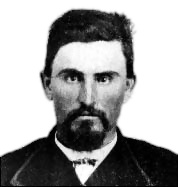
Charles Goodnight, also known as Charlie Goodnight, was a rancher in the American West. In 1955, he was inducted into the Hall of Great Westerners of the National Cowboy & Western Heritage Museum.
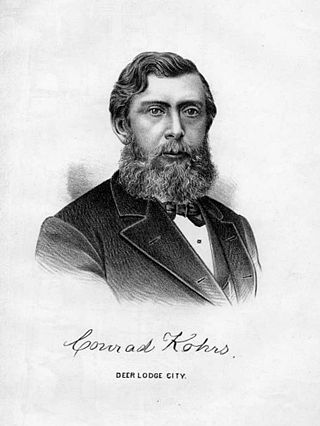
Conrad Kohrs, born Carsten Conrad Kohrs was a Montana cattle rancher and politician.

Oliver Loving was an American rancher and cattle driver. Together with Charles Goodnight, he developed the Goodnight-Loving Trail. He was mortally wounded by Native Americans while on a cattle drive.

A chuckwagon is a type of field kitchen covered wagon historically used for the storage and transportation of food and cooking equipment on the prairies of the United States and Canada. Such wagons formed part of a wagon train of settlers or fed traveling workers such as cowboys or loggers.
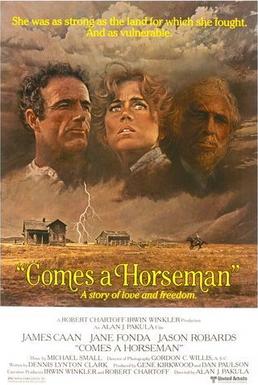
Comes a Horseman is a 1978 American Western drama film starring Jane Fonda, James Caan, Jason Robards, and Richard Farnsworth, directed by Alan J. Pakula.
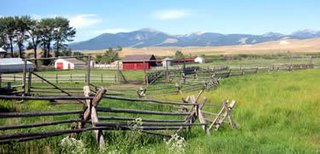
The Grant–Kohrs Ranch National Historic Site, created in 1972, commemorates the Western cattle industry from its 1850s inception through recent times. The original ranch was established in 1862 by a Canadian fur trader, Johnny Grant, at Cottonwood Creek, Montana, along the banks of the Clark Fork river. The ranch was later expanded by a cattle baron, Conrad Kohrs (1866–1920). The 1,618 acres (6.55 km2) historic site is maintained today as a working ranch by the National Park Service.

John Simpson Chisum was a wealthy cattle baron in the American West in the mid-to-late 19th century. He was born in Hardeman County, Tennessee, and moved with his family to the Republic of Texas in 1837, later finding work as a building contractor. He also served as county clerk in Lamar County. He was of Scottish, English, and Welsh descent.
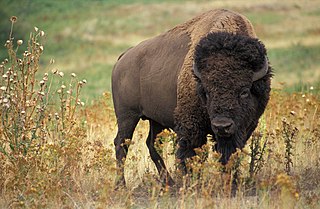
The Plains bison is one of two subspecies/ecotypes of the American bison, the other being the wood bison. A natural population of Plains bison survives in Yellowstone National Park and multiple smaller reintroduced herds of bison in many places in the United States as well as southern portions of the Canadian Prairies.

Cattle drives were a major economic activity in the 19th and early 20th century American West, particularly between 1850s and 1910s. In this period, 27 million cattle were driven from Texas to railheads in Kansas, for shipment to stockyards in Louisiana and points east. The long distances covered, the need for periodic rests by riders and animals, and the establishment of railheads led to the development of "cow towns" across the frontier.
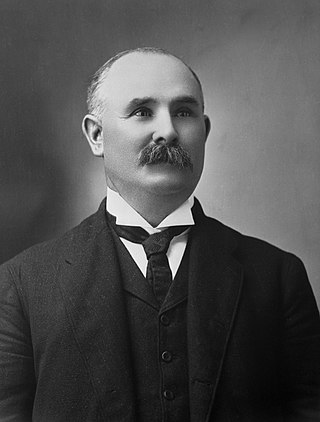
Patrick Burns was a Canadian rancher, meat packer, businessperson, senator, and philanthropist. A self-made man of wealth, he built one of the world's largest integrated meat-packing empires, P. Burns & Co., becoming one of the wealthiest Canadians of his time. He is honoured as one of the Big Four western cattle kings who started the Calgary Stampede in Alberta in 1912.

Ellen Liddy Watson was a pioneer of Wyoming who became known as Cattle Kate, an outlaw of the Old West, although the characterization is a dubious one, as subsequent research has tended to see her as a much maligned victim of a self-styled land baron. Watson had acquired homestead rights on land with water resources vital to the wealthiest rancher in the county, Albert Bothwell, when she was accused by him of cattle rustling. She was abducted from her home and lynched along with her husband by Bothwell and some other ranchers he had incited against her. The bodies were left hanging for two days, and the reputation that attached to her until recently was quickly established by newspaper publicity. Accounts of Watson as a rustler are now regarded as highly biased. Her life has become an Old West legend and inspired a number of television and film accounts.

There is evidence of prehistoric human habitation in the region known today as the U.S. state of Wyoming stretching back roughly 13,000 years. Stone projectile points associated with the Clovis, Folsom and Plano cultures have been discovered throughout Wyoming. Evidence from what is now Yellowstone National Park indicates the presence of vast continental trading networks since around 1,000 years ago.
Goodnight is an unincorporated community in Armstrong County, Texas, United States. The community is part of the Amarillo Metropolitan Statistical Area. In 2000, the population was 18.

A ranch is an area of land, including various structures, given primarily to ranching, the practice of raising grazing livestock such as cattle and sheep. It is a subtype of farm. These terms are most often applied to livestock-raising operations in Mexico, the Western United States and Western Canada, though there are ranches in other areas. People who own or operate a ranch are called ranchers, cattlemen, or stockgrowers. Ranching is also a method used to raise less common livestock such as horses, elk, American bison, ostrich, emu, and alpaca.
Christopher Columbus Slaughter (1837–1919) was an American rancher, cattle drover and breeder, banker and philanthropist in the Old West. After serving in the Confederate States Army during the American Civil War of 1861–1865, he came to own 40,000 cattle and over one million acres of ranch land in West Texas. He became the largest taxpayer in Texas, and used his wealth to endow Baptist institutions. He was known as the "Cattle King of Texas."
Mary Ann Dyer "Molly" Goodnight was an American cattlewoman and rancher married to prominent Texas rancher and cattleman Charles Goodnight. She was a 1991 inductee of the National Cowgirl Museum and Hall of Fame.

The JA Ranch is a historic cattle ranch in the Palo Duro Canyon in Armstrong County, Texas. Founded in 1876 by Charles Goodnight and John George Adair, it is the oldest cattle ranching operation in the Texas Panhandle. Its headquarters area was designated a National Historic Landmark in 1960 for its association with Goodnight, one of the most influential cattle barons of the late 19th century. The ranch is an ongoing business, operated by Adair's descendants.
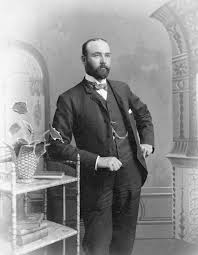
William Charles James Roper Hull was a Canadian rancher, meat packer, businessman, and philanthropist. He played a prominent role in western Canada's early economic development by integrating a systematic approach to cattle raising, meat processing, and retailing on a large scale in Alberta.














